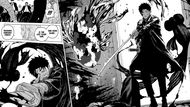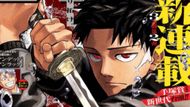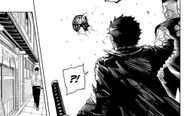Weekly Shonen Jump is, once again, staring down the edge of a major transition, and Kagurabachi is a series that carries the torch. With My Hero Academia and Jujutsu Kaisen having wrapped up their stories, WSJ has bid farewell to two of its biggest pillars. And while One Piece is still sailing strong, the lineup beneath it looks thinner by the month.
This is a magazine that, historically, has thrived on its ability to churn out new mega-hits just as old ones bow out. Dragon Ball gave way to One Piece and Naruto. Then Bleach, My Hero Academia, and Jujutsu Kaisen rose to the challenge. Now? That question mark looms large once more.
So, where does Jump go from here? The answer might lie in three key names: Akane-banashi, Ichi no Majo, and most importantly, Kagurabachi. These are the titles Jump needs to keep, not just as filler between bigger names, but as the new faces of the magazine. And among them, Kagurabachi is quietly, or not-so-quietly, becoming the unlikely hero Weekly Shonen Jump desperately needs.

To understand why Kagurabachi matters so much right now, we need to understand what’s leaving. My Hero Academia and Jujutsu Kaisen weren't just popular—they were foundational.
Both series brought in massive international fandoms, inspired anime, merchandise, movies, and put their authors—Kohei Horikoshi and Gege Akutami—on global pedestals. Their departures created an undeniable vacuum.
The landscape they helped shape was a more mature, gritty flavor of shonen, marked by trauma-ridden protagonists, morally grey ideologies, and high-stakes, high-style action. These stories, particularly JJK, carried the torch from Chainsaw Man, forming a modern “dark era” of shonen that resonated with audiences burned out on typical power-of-friendship fare.
Meme to Mainstream: Kagurabachi’s Unlikely Rise

When Kagurabachi first dropped, nobody expected it to blow up the way it did. Its stoic protagonist, cool sword, and dramatic splash page were memed into oblivion. The internet dubbed it “the next great shonen” before it even had five chapters. But what started as a joke became a phenomenon.
The memes were just the hook. The actual manga? Surprisingly legit. In just its first few chapters, Kagurabachi established a compelling world of sorcery, trauma-fueled revenge, and morally complex samurai-inspired characters.
Its art was cinematic, its choreography crisp, and its pacing relentless. It wasn’t long before people realized they weren’t just reading Kagurabachi for laughs; they were invested.
By its second volume, Kagurabachi already had 200,000 copies in circulation—an extraordinary figure for such a new series. The first volume flew off the shelves in Japan and became a sensation in the West. Like RuriDragon before it, this was a manga that didn’t just debut well but also dominated.
The battle shonen blueprint: Kagurabachi has it all

Let’s break it down. What makes a manga flagship material in the pages of Weekly Shonen Jump?
- A strong protagonist with a memorable look and compelling goal
- Fluid, dynamic battle sequences that make great use of a supernatural power system
- A high-concept setting that allows for endless story arcs, lore, and expansion
- An art style that pops
- Villains that stick—philosophical, sadistic, charismatic
Kagurabachi meets all the key criteria. Its protagonist, Chihiro Rokuhira, is already becoming a fan favorite thanks to his emotionally grounded motivations and savage combat prowess. Its villains, especially Sojo, aren’t just evil for evil’s sake, as they’re crafted with ideological purpose and intimidating presence. In just under 30 chapters, Kagurabachi has established more lore, stakes, and character intrigue than many series manage in double that span.
Dark shonen remains in demand

Some fans argue that the age of darker, grittier shonen is waning. Frieren, Sousou no Frieren, and even RuriDragon are part of a trend toward slower, more introspective fantasy stories. But let’s not forget—the hunger for blood-soaked rivalries, dramatic power-ups, and climactic showdowns isn’t going anywhere. We’ll always need manga where swords clash, ideologies collide, and trauma leads to triumph. Kagurabachi delivers that in spades.
Final thoughts
Shonen Jump isn’t in a crisis, but it is in transition. As Horikoshi and Gege prepare to exit the stage, a new generation needs to step up. Some will quietly secure their place (Akane-banashi, Ichi the Witch), others will hold the middle (Blue Box, Sakamoto Days).
But if there’s one series with the look, feel, and fire to become the next great Jump icon, it’s Kagurabachi. The memes may have birthed it, but the story is keeping it alive. And as Jump stands at yet another crossroads, Chihiro Rokuhira may just be the sword-wielding hero they need to carve out a new golden age.
